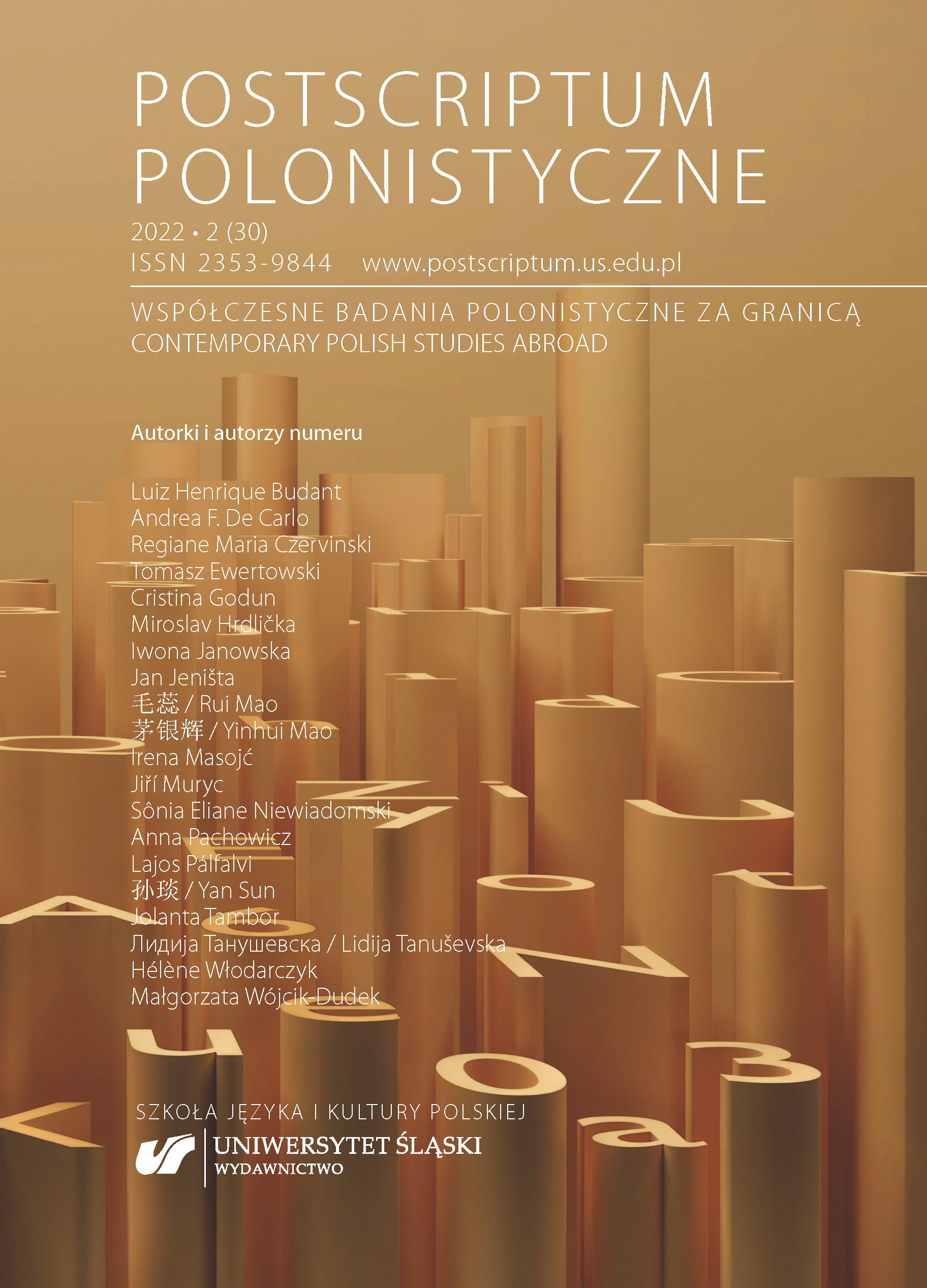关于中国高校波兰语专业教材使用及编写的几点思考——以上海外国语大学波兰语专业本科一、二年级为例
Reflections on the Development of Textbooks for Students of Polish in China on the Example of the First and Second Year of Polish Philology at Shanghai International Studies University
Author(s): Rui Mao, Tomasz EwertowskiSubject(s): Foreign languages learning, Western Slavic Languages, Philology
Published by: Wydawnictwo Uniwersytetu Śląskiego
Keywords: glottodidactics; Polish language in China; jpjo manual
Summary/Abstract: This article is about the challenges associated with the use of textbooks for teaching Polish in classes for Chinese-speaking students. In the first part, which reviews the history of the development of Polish language teaching at Chinese universities, Rui Mao and Tomasz Ewertowski discuss the determinants of Polish glottodidactics in the People’s Republic of China. The flourishing of Chinese Polish studies in recent years is the result of cooperation between Poland and China as part of the Belt and Road Initiative. Starting in 1954 and for a period of almost 60 years, the Beijing University of Foreign Languages was the only university center offering Polish studies. However, between 2012 and 2021, new courses were opened with Polish language in the study programs at 17 other universities. This rapid expansion has been accompanied by great challenges, one of them being the development of a variety of teaching materials. These challenges are presented here on the basis of a case study in the second part of the article, which treats of the use of teaching materials in teaching Polish at the Shanghai International Studies University (SUSM/SISU). Although Polish has been taught at university level in China for 65 years, the Chinese publishing market does not boast of many local textbooks. For this reason, teachers have availed themselves of books published in Poland. However, these textbooks have been prepared for people who know European culture well, and their emphasis on communication does not correspond to the habits of Chinese students. These and other difficulties prompted teachers of Polish at SISU to work on their own teaching materials. The third part of the article, treating of textbooks developed at SISU, discusses the following textbooks created in the above-mentioned context, Bliżej historii Polski [Closer to the History of Poland] and Praktyczna gramatyka języka polskiego [Practical Grammar of the Polish Language]. The first one has two main goals, i.e., to familiarize students with basic information about the history of Poland and to develop students’ ability to understand written texts. The book is intended for students from China. For this reason, explanations of difficult vocabulary are given in Chinese, and the content takes into account the Chinese cultural context. In turn, the Practical Grammar of the Polish Language has been developed with the intention of providing a comprehensive, accessible, and practical compendium for teaching grammar to native Chinese speakers.
Journal: Postscriptum Polonistyczne
- Issue Year: 30/2022
- Issue No: 2
- Page Range: 1-13
- Page Count: 13
- Language: Chinese

